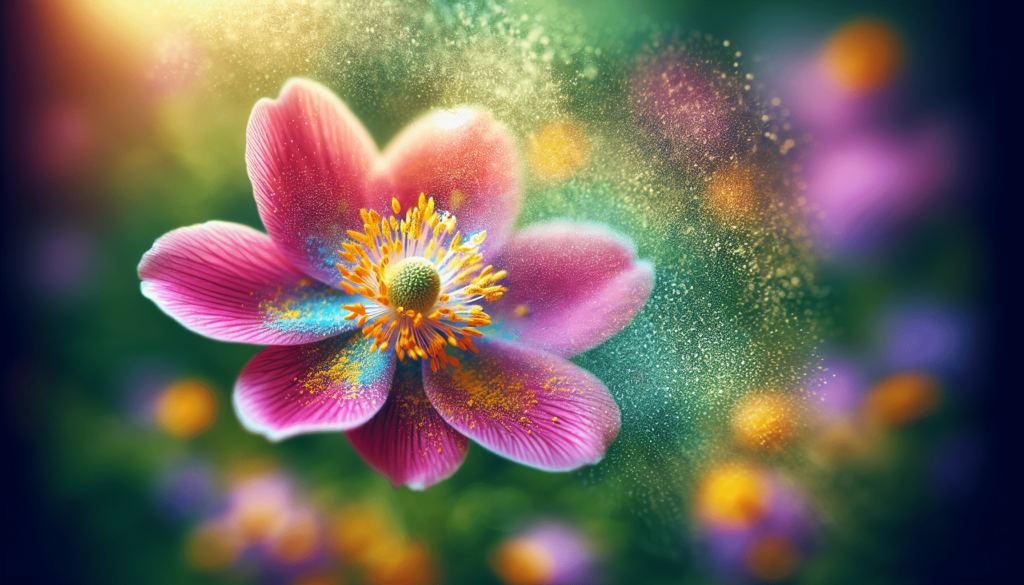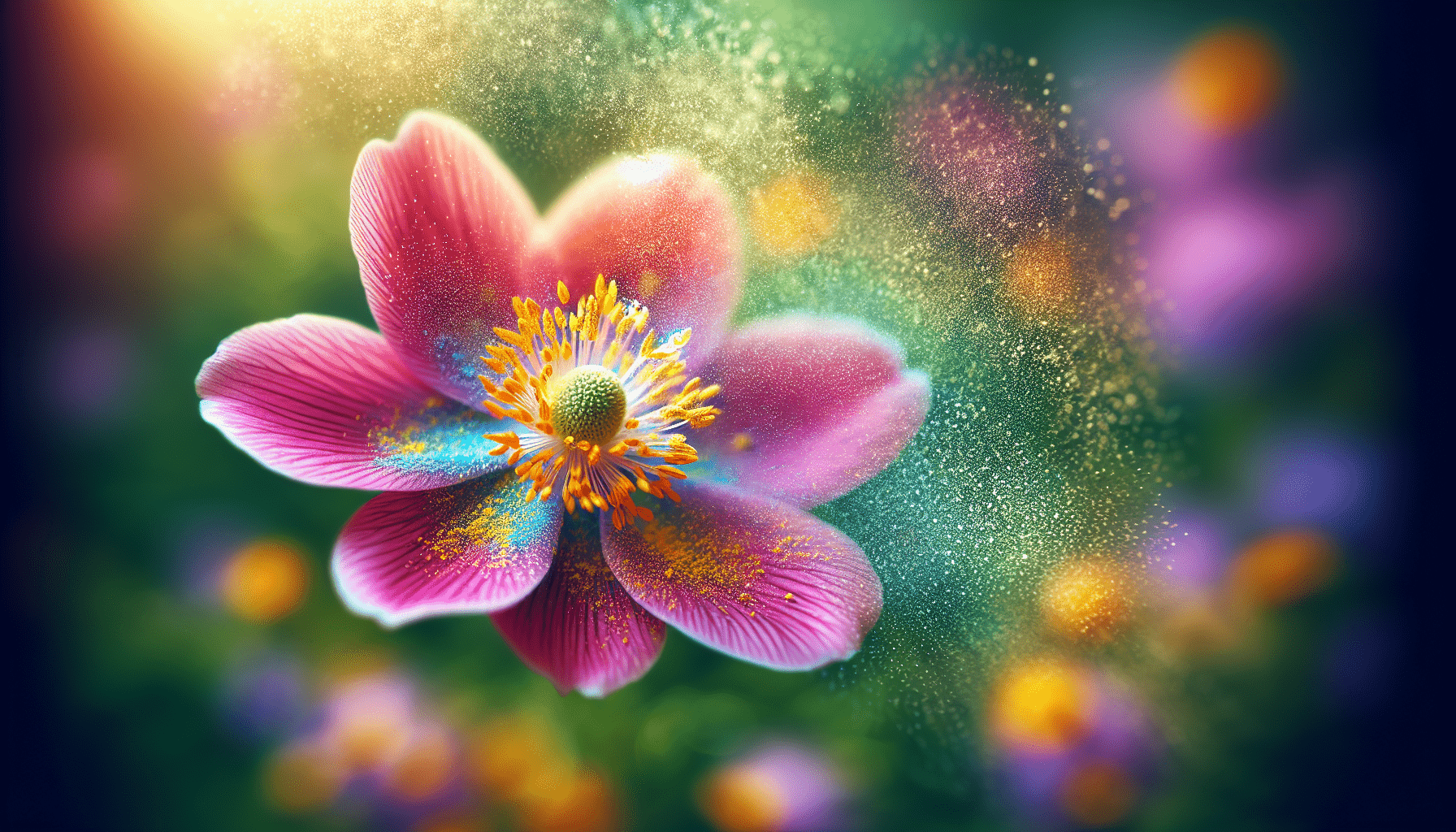Have you ever noticed a scratchy throat or itchy eyes right when spring begins? Welcome to the world of pollen allergies, a common seasonal annoyance that affects millions each year. Understanding what they are, why they occur, and how you can manage them can make a significant difference in how you experience the changing seasons.
What Are Pollen Allergies?
Pollen allergies, often known as hay fever or allergic rhinitis, occur when your immune system mistakenly identifies pollen as a dangerous intruder. This immune response is what triggers those annoying symptoms like sneezing, congestion, and itchy eyes. There are various types of pollen, each stemming from different kinds of plants.
Types of Pollen
Knowing the types of pollen that could trigger your allergies is the first step in managing them. Here’s a breakdown of the main offenders:
| Type of Pollen | Source | Season |
|---|---|---|
| Tree Pollen | Oak, Birch, Cedar | Spring |
| Grass Pollen | Timothy, Bermuda, Kentucky Bluegrass | Late Spring to Summer |
| Weed Pollen | Ragweed, Sagebrush, Pigweed | Late Summer to Fall |
Tree Pollen
Spring is often associated with tree pollen, which is one of the first allergens to be released throughout the year. Different trees release pollen at different times, so your symptoms might vary depending on the specific types of trees in your area.
Grass Pollen
Grass pollen tends to be prevalent in late spring and can continue into the summer. If you find yourself sneezing while mowing the lawn or picnicking, grass pollen might be your culprit.
Weed Pollen
As summer winds down, weed pollen becomes more prevalent. Ragweed is particularly notorious for causing allergic reactions in the late summer and fall.
Symptoms of Pollen Allergies
Allergy symptoms can be overwhelming, especially when they start interfering with your daily activities. Common symptoms of pollen allergies include:
- Sneezing
- Runny or stuffy nose
- Watery, itchy eyes
- Scratchy throat
- Fatigue
These symptoms might leave you feeling miserable, but they can vary in intensity depending on the concentration of pollen in the air and your sensitivity to it.

How Your Body Responds to Pollen
Your immune system plays a crucial role in how your body reacts to pollen. When it mistakenly identifies pollen as a threat, it releases histamines into your bloodstream. Histamines are chemicals that attempt to purge the invader from your body, leading to the cascade of allergy symptoms you’re familiar with.
The Role of Histamines
Histamines cause your blood vessels to expand and the tissues in your nose to swell, working to eliminate the allergens. This immune mechanism is helpful against genuine threats but highly uncomfortable when it mistakenly targets harmless pollen.
Diagnosis of Pollen Allergies
Wondering if pollen is indeed what’s causing your symptoms? A proper diagnosis is crucial. Your healthcare provider might use various methods to determine the source of your allergies.
Skin Prick Test
A common diagnostic tool is the skin prick test. During this test, small amounts of various allergens, including pollen, are introduced just below the surface of your skin. If you’re allergic, you’ll develop a small, raised bump at the test site.
Blood Test
Alternatively, a specific IgE blood test can measure the level of allergy-inducing antibodies in your blood. This can be particularly useful if you have skin conditions that make skin prick tests impractical.

Managing Pollen Allergies
Once you’re certain pollen is the root of your symptoms, several strategies can help manage and reduce their impact.
Avoiding Triggers
One of the most practical ways to handle pollen allergies is by reducing your exposure to known triggers.
- Stay Indoors: Limit outdoor activities when pollen counts are high, especially during early morning hours when levels peak.
- Keep Windows Closed: Use air conditioning to filter indoor air rather than letting pollen-laden air into your home.
- Shower and Change Clothes: After spending time outside, wash away pollen from your skin and clothing to prevent further exposure.
Medical Treatments
There are numerous over-the-counter options available, as well as prescription medications that can help. Some of them include:
- Antihistamines: These can help reduce sneezing, itching, and runny nose by blocking the effects of histamines.
- Nasal Corticosteroids: These are effective in reducing inflammation and are often more effective than antihistamines.
- Decongestants: These relieve stuffy noses but should only be used for short periods due to potential side effects.
- Leukotriene Inhibitors: These medications block the action of chemical messengers involved in allergic responses.
Immunotherapy
For more severe allergy cases, immunotherapy, which involves regular injections of tiny amounts of allergens over several years, can significantly reduce symptoms over time. This approach modifies your immune system’s response to pollen, gradually diminishing its reaction.
Natural Remedies for Pollen Allergies
If you prefer a more natural route, several remedies may alleviate symptoms without medication.
Saline Nasal Rinse
A saline rinse can help clear allergens from your nasal membranes and reduce congestion. You can do this using a neti pot or a saline spray from a pharmacy.
Honey
Some people find relief by taking local honey, which can act like a natural allergy shot by exposing you to small amounts of local pollen.
Herbal Supplements
Herbs like butterbur and spirulina are believed to have anti-inflammatory effects, although scientific evidence is limited on their effectiveness.
Lifestyle Changes to Combat Pollen Allergies
Simple lifestyle adjustments may also offer significant relief from pollen allergies.
Enhance Indoor Air Quality
Consider using a HEPA filter, which can remove pollen and other allergens from the air inside your home, making it a safer haven.
Watch the Weather
Understanding the weather can offer insights into when pollen levels are likely to be higher. Dry, windy days move pollen around more freely, whereas wet, rainy days can wash pollen away.
Strategic Ventilation
If you decide to vent your home by opening windows, do so later in the day when pollen counts typically drop.
When to See a Doctor
While general allergy symptoms can often be managed at home, severe or persistent symptoms may warrant a visit to a healthcare provider.
Severe Reactions
If you experience tightness in your chest, trouble breathing, or consistent sinus infections, consult your doctor. These may indicate complications such as asthma, which can be exacerbated by pollen.
Exploring Treatment Options
Should over-the-counter options prove insufficient, a healthcare provider can discuss other treatments like prescription medication or allergen immunotherapy.
Long-Term Effects of Pollen Allergies
Understanding the long-term effects of pollen allergies is important for your overall health. Chronic inflammation from untreated allergies can contribute to complications like sinusitis or even increase the risk of asthma.
Maintaining Good Health
Keep your health in check with a combination of allergy management strategies and lifestyle changes. Staying informed and proactive can lead to a more enjoyable spring, summer, and fall each year.
Conclusion
Gaining a solid understanding of pollen allergies equips you to better handle their challenges. Whether you seek relief through medications, natural remedies, or lifestyle adjustments, the key is a comprehensive approach tailored to your individual needs. Taking the steps to manage your allergies effectively can transform seasonal challenges into a comfortable and enjoyable time of year.
